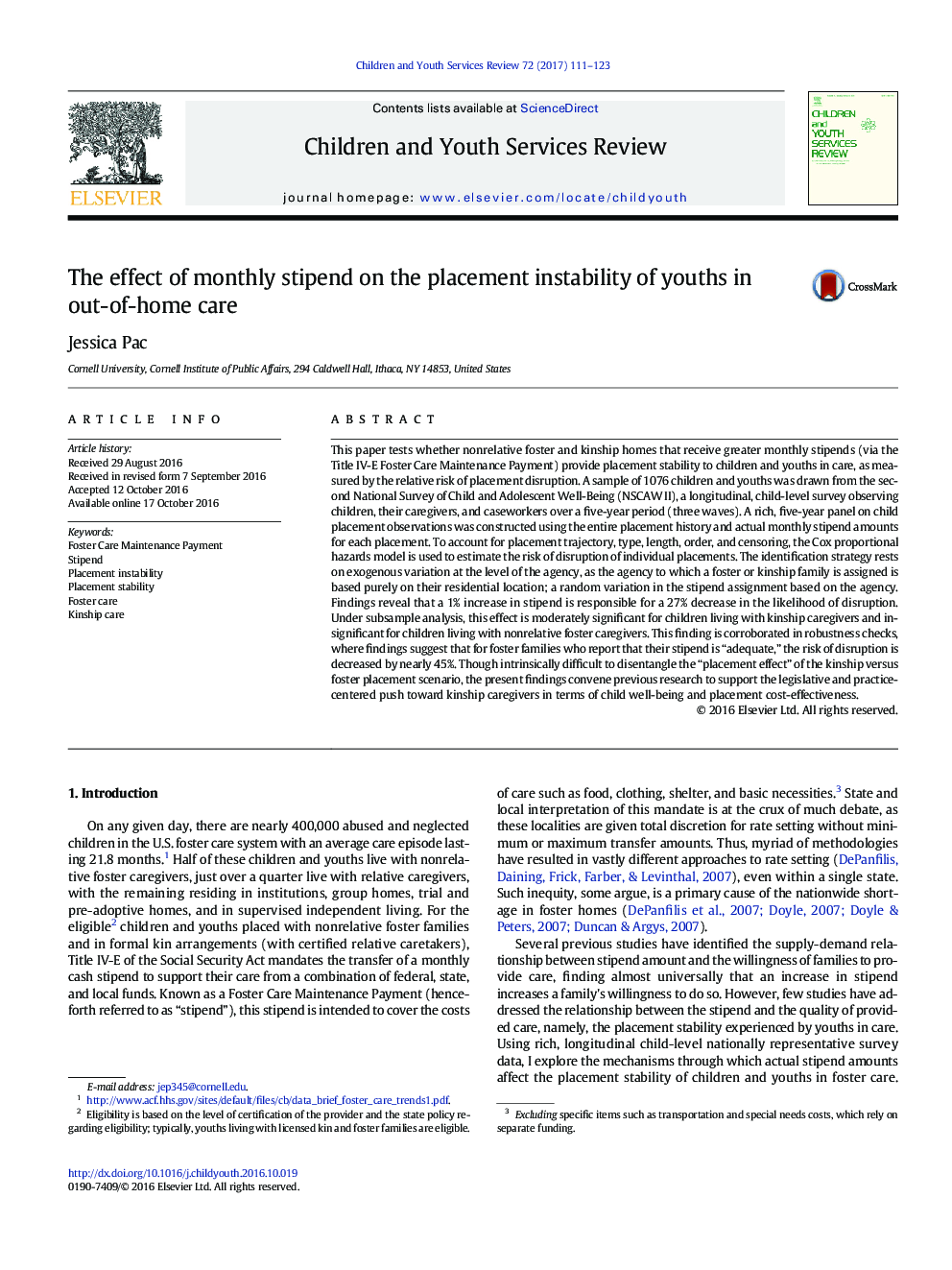| Article ID | Journal | Published Year | Pages | File Type |
|---|---|---|---|---|
| 4936328 | Children and Youth Services Review | 2017 | 13 Pages |
â¢Foster Care Maintenance Payments are considered as a potential cause of placement disruption.â¢Findings suggest that a 1% increase in stipend decreases the likelihood of disruption by 27%.â¢Kinship caregivers are more sensitive to the stipend size than non-relative foster caregivers.
This paper tests whether nonrelative foster and kinship homes that receive greater monthly stipends (via the Title IV-E Foster Care Maintenance Payment) provide placement stability to children and youths in care, as measured by the relative risk of placement disruption. A sample of 1076 children and youths was drawn from the second National Survey of Child and Adolescent Well-Being (NSCAW II), a longitudinal, child-level survey observing children, their caregivers, and caseworkers over a five-year period (three waves). A rich, five-year panel on child placement observations was constructed using the entire placement history and actual monthly stipend amounts for each placement. To account for placement trajectory, type, length, order, and censoring, the Cox proportional hazards model is used to estimate the risk of disruption of individual placements. The identification strategy rests on exogenous variation at the level of the agency, as the agency to which a foster or kinship family is assigned is based purely on their residential location; a random variation in the stipend assignment based on the agency. Findings reveal that a 1% increase in stipend is responsible for a 27% decrease in the likelihood of disruption. Under subsample analysis, this effect is moderately significant for children living with kinship caregivers and insignificant for children living with nonrelative foster caregivers. This finding is corroborated in robustness checks, where findings suggest that for foster families who report that their stipend is “adequate,” the risk of disruption is decreased by nearly 45%. Though intrinsically difficult to disentangle the “placement effect” of the kinship versus foster placement scenario, the present findings convene previous research to support the legislative and practice-centered push toward kinship caregivers in terms of child well-being and placement cost-effectiveness.
